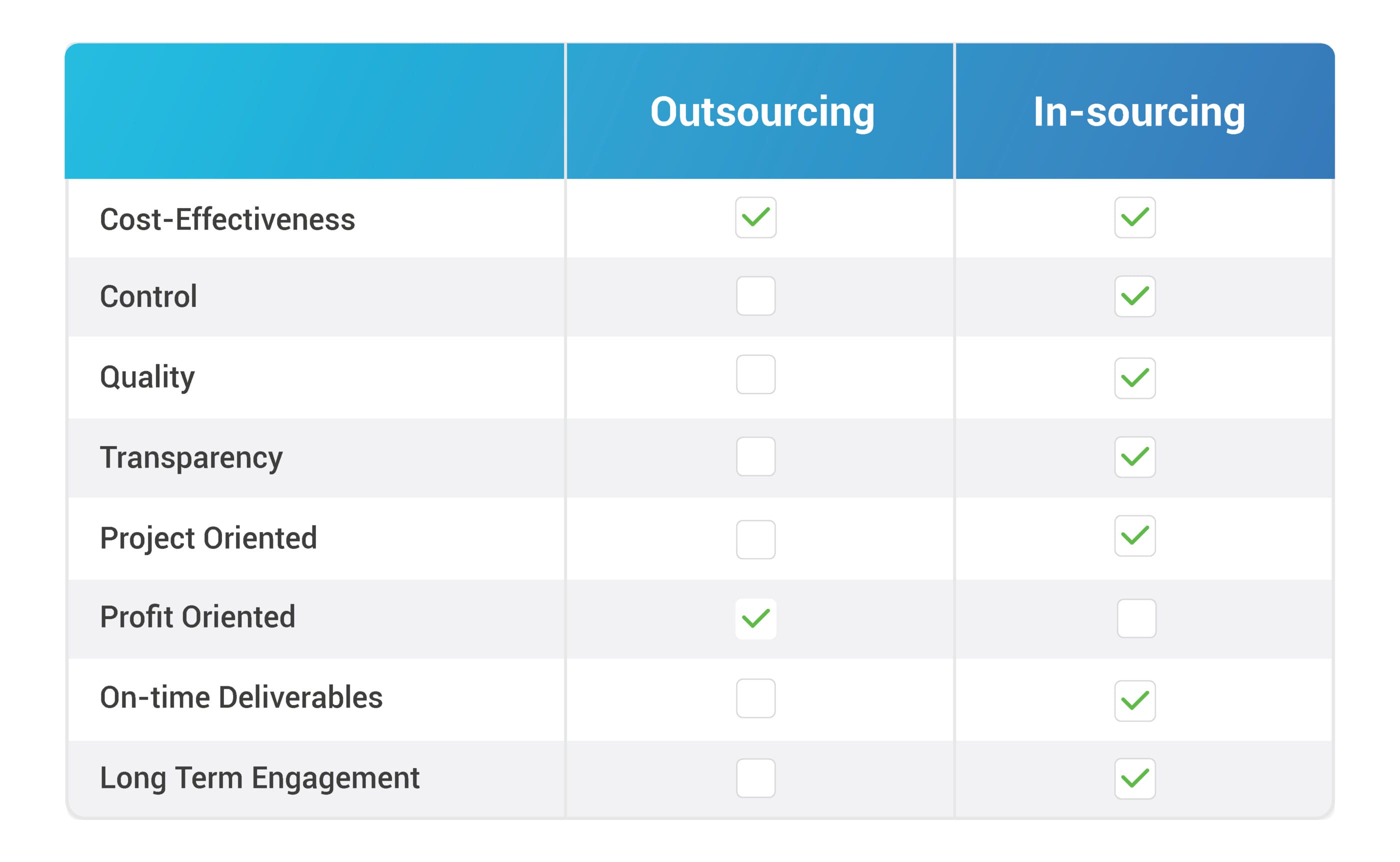Whenever an organization is looking to outsource, various questions arise, centered mainly on how to outsource and which engagement model to follow. Owing to the highly competitive nature of the market we thrive in, there is an inherent need to seek out new ways to increase productivity and efficiency.
What is Outsourcing?
Outsourcing, as a business practice, has been accepted and implemented widely across various continents. What draws so many businesses to outsourcing is that it allows a company to focus on its core competencies while offloading its non-core competencies to outsourcing providers at very low costs.
While there has been outcry about this practice affecting economies of the nations that outsource, it is still employed in varied measures as a strategic business tactic. Outsourcing, however, comes with its flaws. A major disadvantage to the customer is that he forfeits control over the project when he signs a contract to have another company take over his tasks, because the managerial control is now with the other company and unfortunately, the outsourcing provider is not driven by the same principles or mission goals that your company operates on.
While most companies are lured in by the Fixed Price model, they must also be aware that there are several hidden costs associated with outsourcing. Additional charges for anything not covered in the contract and legal fees to retain a lawyer to review the contracts can quickly become burdensome.
There is also an issue with quality that might arise because the key driving force for an outsourcing company is profit. As the prices are fixed by the contract, the only way to increase profit would be by decreasing expenses, thereby resulting in a low quality product.
What is Insourcing?
As a measure to counteract these issues, there has been a rise in Insourcing, which is being touted as an alternative to outsourcing. This concept is driven by the fact that offshoring is always made doubly easy and effective when you know and can develop a close relationship with the people working for you.
The intent of insourcing is to create the core of the dedicated team and ensure that it works productively in complete alignment with the client’s methods and expectations and ensure optimal output. Despite an outside team being assigned the task of software development, the processes followed are exactly as they would have been in-house and are determined entirely by the client.
This concept also offers the customer the liberty of aligning the culture of the dedicated team to that of his own organization and gives him the flexibility to set expectations according to company standards.
Outsourcing versus Insourcing
The difference between outsourcing and insourcing is that it allows for the establishment of long-term relationships with customers across various industries. It also does away with frequent delays in deliverables due to communication lag or miscommunication seen commonly with outsourcing by setting in place tight communication and collaboration between the dedicated team and the customer.
The customer has access to highly competent resources who work exclusively for him and has the ability to supervise and monitor closely the resources and processes, ensure efficient workflow through project management and regular status updates and rapidly scale up operations, when required.
With insourcing, he has direct access to specially selected qualified technical experts, programmers, software architects as well as QA engineers and business analysts who work fully under the control and supervision of the client.
There is also an option to assign a manager or to monitor on his own the development team on-site depending on whether the customer is looking for minimal participation or complete authority. If a mutually beneficial collaboration is put in place early on, it can result in a time-efficient, win-win solution. There is also the relief of knowing that the team is entirely dedicated to your project and can not be reassigned elsewhere.
The customer determines the business hours as well as means of communication that are flexible to him. He has complete freedom to make alterations to preferences, requirements, choices and various other project details without going through the hassle or waste time unnecessarily with change requests or financial statement revisions.

Making the right decision.
Before one can make a call as to which one of the two is the better option, it is crucial to define business goals. Getting the team set up based on your requirements and needs can be a time-intensive process.
However, Insourcing offers a brilliant opportunity for the customer to amplify existing business with his choice of skilled resources with as much degree of supervision and participation as he sees fit. It also makes available additional customer-friendly features resulting in high quality products and long-term engagements, while simultaneously also raking in with it all the attractive benefits of Outsourcing.
If you want to hear from a customer what this has done for them, please check this movie:




